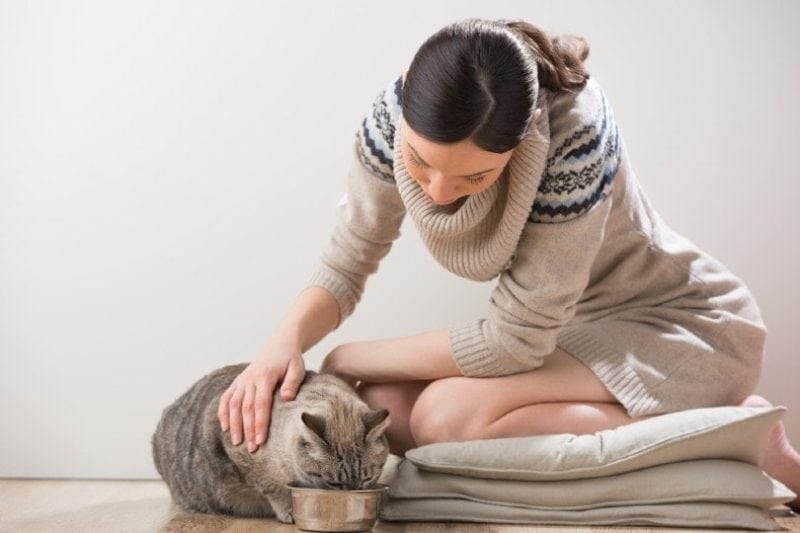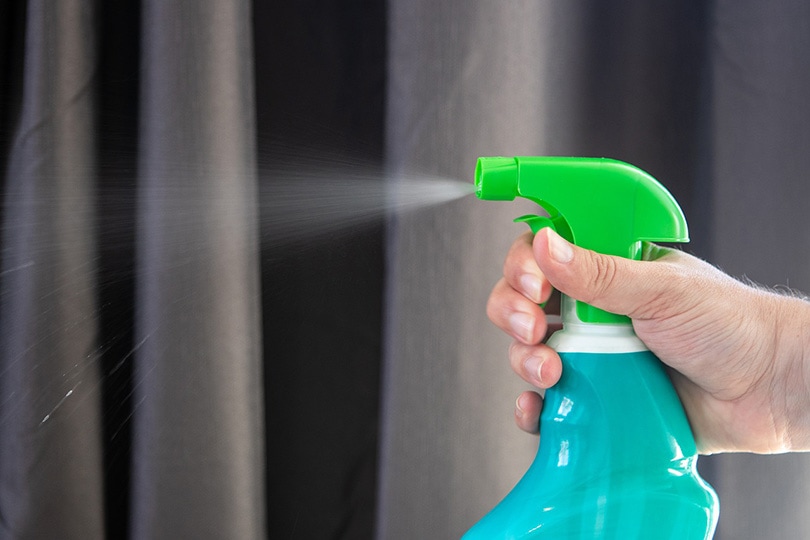
Cats are intriguing animals that can provide plenty of entertainment, but they can also be quite frustrating for owners at times. Scratching is a natural habit for cats that not only enables them to sharpen and maintain their claws but can also be used to mark territory, relieve anxiety, and exercise. However, when cats scratch items like furniture, walls, and doors it can be problematic, damaging the surface and potentially causing tension between the cat and their owner. If your cat is scratching the doors of your house, there are actions you can take to help stop this unwanted behavior.
Below are 11 tips to help identify the cause of the problem and stop inappropriate scratching.
What’s The Cause?
First and foremost, you should try and identify the cause of the scratching. Scratching is a natural behavior and instinctive to cats, but it can be a sign of anxiety or stress. It may be a sign that your cat feels lonely or that it struggles being left alone at night. If you can identify the cause of the scratching, it will make it easier to remedy the problem.
The 11 Tips That Will Stop a Cat From Scratching the Door
1. Ignore It
It can be difficult but ignoring your cat’s scratching might be your best first step. Sometimes, cats scratch to get attention. If your cat wants feeding and feels that you aren’t acting quickly enough, scratching a door or other surface is a good way to get your attention. Ignore the scratching until it stops, and then take action to prevent further scratching.

2. Don’t Reward Scratching
Sometimes, we inadvertently reward scratching behavior when we shouldn’t. Giving your cat a treat or running out and putting their food out because they are scratching may only serve to encourage them to do it again the next time they want a treat or want feeding. Tell them no, wait until the cat stops scratching and moves away from the door, praise them, and then reward them for stopping the behavior.
3. Provide Scratching Posts
Scratching is a natural behavior for cats, and it shouldn’t be stopped completely. However, you do want to ensure that your cat only scratches appropriate surfaces. Scratching posts are ideal, and they are designed for the very purpose. They are textured to be appealing and to maintain claws, and good-quality posts are designed to last. Provide your cat with at least one scratching post, and ideally a couple in different locations around the house.
4. Provide Stimulation
When cats get bored, they might scratch as a means of relieving this boredom. Play with them, offer scratch posts, and provide fulfilling toys that will not only entertain your feline friend but will provide fulfillment and enjoyment. This could be enough to stop the unwanted scratching behavior. If you can find interactive toys, then these provide even more fulfillment for your kitty.
5. Start Training
We may associate training with dogs, rather than cats, but it is possible to train cats, as well. At the very least it is possible to encourage good behavior and discourage bad behavior using some fairly basic training. If your cat is scratching doors, tell them no. Don’t shout but do have conviction in your command. When the cat stops scratching, offer praise and, if you’re using a reward, offer the reward. You should also praise the cat for scratching its scratching post and you can provide rewards in the same way. Over time, you should gradually reduce how often you give rewards for positive behavior.

6. Tire Them Out
If your cat is scratching at night or when you’re out of the house, they could be missing you and suffering separation anxiety. They could also be bored. Before you go to bed, dedicate some time to playtime. Ensure your cat is tired before you go to sleep or go out. Even if your cat misses you and that’s why it is scratching, a tired cat is less likely to scratch.
7. Establish a Routine
Cats thrive on routine. They like to know when they will be fed when they are expected to go to sleep, and even when you will be leaving the house and returning. While you don’t necessarily need to base the time you go to sleep on your cat’s routine, you should determine a schedule for your cat. Feed them at the same time, let them out or in at similar times, and play with them at the same time.

8. Calming Remedies
There are a number of calming remedies on the market. These can be pheromone-based or herbal. They are especially effective in combating anxiety and stress, so if your cat’s unwanted scratching is being triggered by either of these emotions, a calming remedy will help eliminate the behavior.
9. Use a Repellent
If your cat specifically scratches one door, you have a scratching post, and you have tried other techniques, it might be trying to mark the door or the area around the door as its territory. Use a natural repellent to discourage your cat. You can buy repellents, or create your own using lemon juice and water, and spray it on the door.

10. Attach Double-Sided Tape or Foil
Double-sided tape and tin foil can have a similarly repellent effect on your cat and prevent the behavior. Cats dislike the sticky feeling of the double-sided tape and are seemingly repelled by the crumply feeling of tin foil. Put strips of it at the height your cat scratches. You can try taking it off after a few weeks, rather than leave it as a permanent door decoration.
11. Trim Claws
One of the reasons that cats scratch and especially enjoy scratching hard and textured surfaces is to sharpen and maintain their claws. Scratching also helps remove dead claws. You can help maintain your cat’s claws, making them more comfortable and potentially preventing them from scratching doors, furniture, and other items through regular trimming. And if you aren’t comfortable trimming a cat’s claws yourself, you can have a groomer do it for you.
Scratching is a normal cat behavior, but that doesn't mean you have to sacrifice your belongings! The right pair of nail clippers can help you keep your cat's nails perfectly trimmed. We recommend Hepper's Cat Nail Clipper Set, which includes two different sizes of stainless steel clippers, a built-in nail file, and a convenient storage pouch. You'll love the comfortable handles, precision blades, and protective safety guard.
At Pet Keen, we've admired Hepper for many years, and decided to take a controlling ownership interest so that we could benefit from the outstanding designs of this cool cat company!
Conclusion
Cats make interesting and fun pets, but they do have some habits that can be challenging for owners. They naturally need to scratch to maintain their claws and reduce anxiety and mark territory. Provide scratching posts, ensure your cat is stimulated physically and mentally, and consider some basic training to help reduce scratching. You can also maintain your cat’s claws with regular trimming or add double-sided tape or tin foil to the door to discourage unwanted behavior.
Featured Image Credit: touchoforange, Shutterstock








